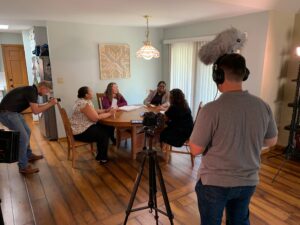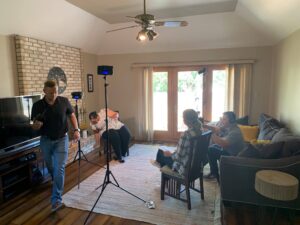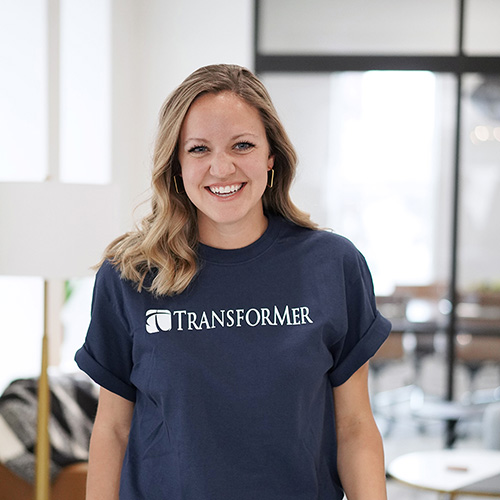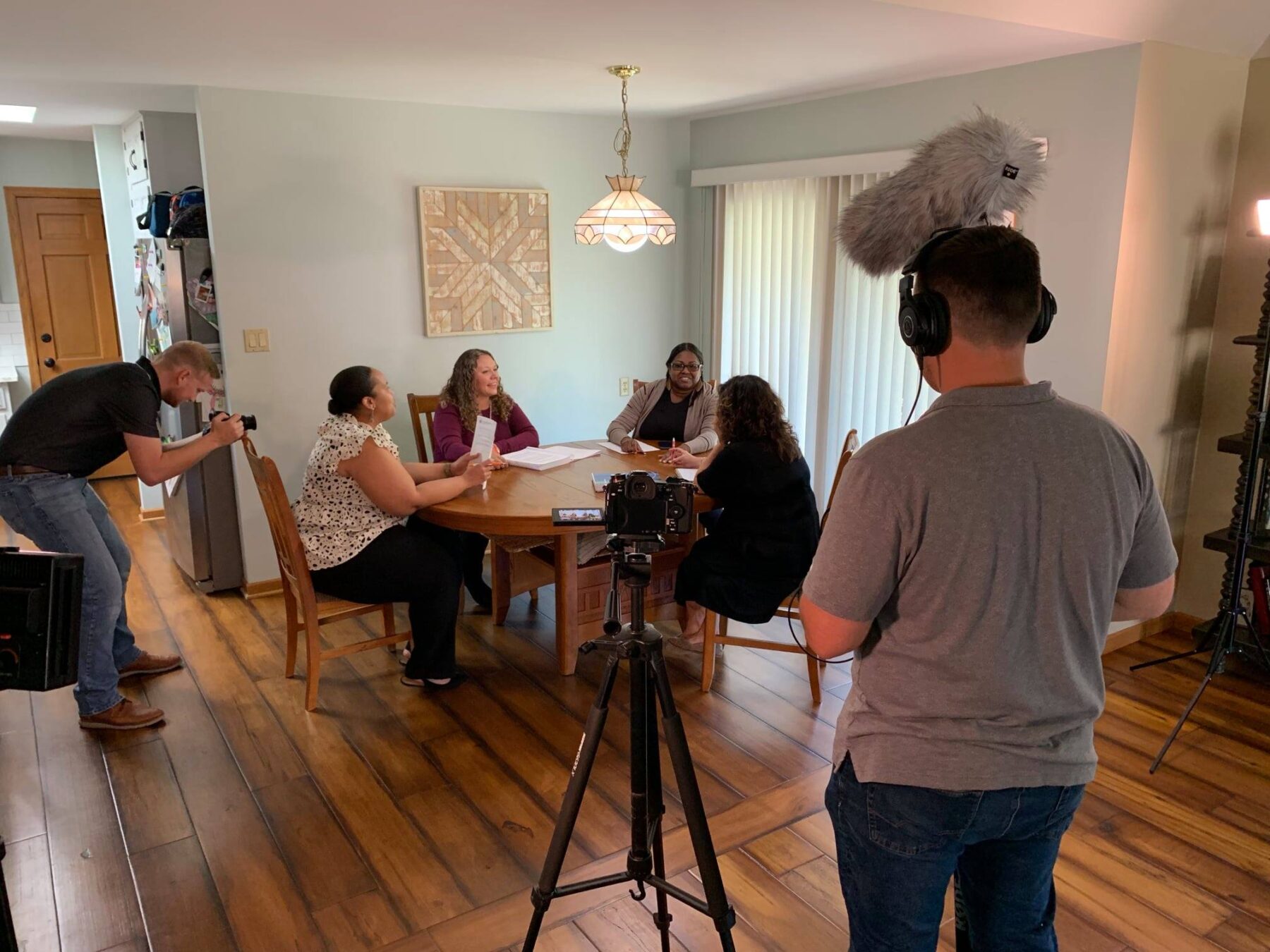As the Communication Manager at Transform Consulting Group, storytelling is one of my favorite parts of this job. I love sharing what our clients – fellow Transformers – are doing nationwide to impact children, families, and communities.
We’ve talked a lot about how we use data to share stories of impact (learn more in this blog). Once you have the data, the method for sharing the story can vary. You may utilize blogs, social media posts, website articles, newsletters, infographics, etc. Today, we’re highlighting an example of sharing your organization’s story about expansion and staff recruitment goals.
Case Study:
Healthy Families Indiana (HFI) does incredible work across the state. They are a voluntary, evidence-based home visitation program designed to promote healthy families and children through various services, including child development, access to health care, and parent education. They were faced with hiring challenges as well as challenges recruiting new clients. To employ talented staff and gain new families for their programs, TCG was hired to create two marketing videos for HFI. (View one of the videos below. The other video is here.)
Note: When thinking about “data-informed” storytelling, it can be easy to believe that your final story will include facts and figures. Sometimes that’s the case! For this project, though, the data informed the need for these marketing videos. By gathering feedback from partners and staff statewide, the team determined these videos would be vital in supporting the organization’s mission. That’s #datainformed storytelling!
Our Approach to Data Storytelling
Regardless of the industry or even platform determined for storytelling, we answer these three simple questions when working with clients to create their data story:
- What’s the Problem?
- What’s the Solution?
- What’s the Success?
The Problem
Every great story starts with a problem – or challenge. This is what captures our audiences’ attention! Your organization’s “problem” may be a lack of affordable early childhood education for working parents or low literacy rates. HFI’s “problem” was 1) they needed more staff, and 2) they needed parents across the state to know and understand their programs so they could use them. When considering the two audiences for these stories, we wanted to find a “hook” that would relate to our target audience. Whether it was a prospective hire, who wanted a more fulfilling job OR a struggling parent needing support.
When addressing the “problem,” it’s important to consider it from your audience’s perspective. You want them to resonate with the message and feel like you are speaking directly to them.
The Solution
How does your organization or program address the problem? It would be best to clarify what value you add to your clients and community.
With our HFI example:
- For potential staff – HFI is hiring and able to offer meaningful work for qualified, passionate candidates.
- For parents – HFI can help connect them with resources and support them on their parenting journey.
The Success
Your video – or overall story – must address some conclusion and spark a call to action. How will your organization make the viewer’s life better? Share the impact!
Tips For a Successful Video Shoot
While the simple framework above can apply to various types of storytelling, it’s important to acknowledge the planning and logistics that specifically go into making a video. Whether doing the video shoot on your own with a simple phone or enlisting a professional camera crew, you want to adequately prepare so your video shoot is efficient and meets your needs.
Before your video shoot, spend time thinking through the following:
1. Determine how you will use video
Who is your audience? How will the videos be shared? Some of this is technical, and some strategic, but it dramatically impacts your end product. If you plan to share videos via social media, then short 30-60-second clips work great. Determine the format for shooting the video to make it simple to upload on a website, embed in a newsletter, or attach in an email. Consider your end product in every decision you make in the planning process.
The HFI videos were unique. They would be used to share with partner organizations across the state. Some would share on their individual websites, some on social media, and some planned to share the video resources with partners in their local communities for presentations or meetings. This is why our call-to-action and overall messaging are pretty generic. We wanted to ensure the videos were usable for everyone. You’ll see both videos are around 2 minutes in duration. While this is long for social media, we also pulled out clips that could be shortened for easy dissemination.
2. Identify key players
Who do you want to talk to on camera? It’s great to have a variety of voices to tell the story. An official spokesperson or well-known individual in the community can help offer credibility and context, but have individuals who can connect with the audience you’re addressing to add a personal side to the story. Communicate with these individuals before the video shoot to ensure they understand the goal of the video and know the unique angle they provide to the story.
3. Outline questions
We don’t recommend scripting out your video because it will look rehearsed and feel less heartfelt. However, you must be prepared and offer direction to whoever is getting interviewed. List out a variety of open-ended questions to help direct the on-camera spokesperson. Share these questions in advance!
4. Plan B-roll shots

Having an additional video (versus just a talking person) is great to help set the story’s scene. B-roll footage supplements your main footage and is a compelling way to grab the viewer’s attention. Before your video shoot, carefully think through the location for interviews and how you can have your spokespeople “do” something. Can you show that if you’re talking about programs that serve kids? Keep confidentiality in mind and ensure that everyone featured on camera signs a waiver.
As a former television reporter, I could write all day about the opportunities video gives you to tell a story. Video is a powerful tool! With our HFI example, we could enlist a video team of experts to do all the technical aspects of this video. We often craft videos with a simple phone camera and editing tools (you can find those videos on our YouTube page). The opportunities are endless! Ultimately, we believe a good story will get attention regardless of how “fancy” the finishing touches are when you go to promote.
We know your organization has a story to tell, and our team at TCG would love to help share your excellent work with the world! Do you need help understanding your data to build the case for a video project like this one featured? Does your data illustrate your incredible work, and now you’re ready to promote it? Let’s chat!

